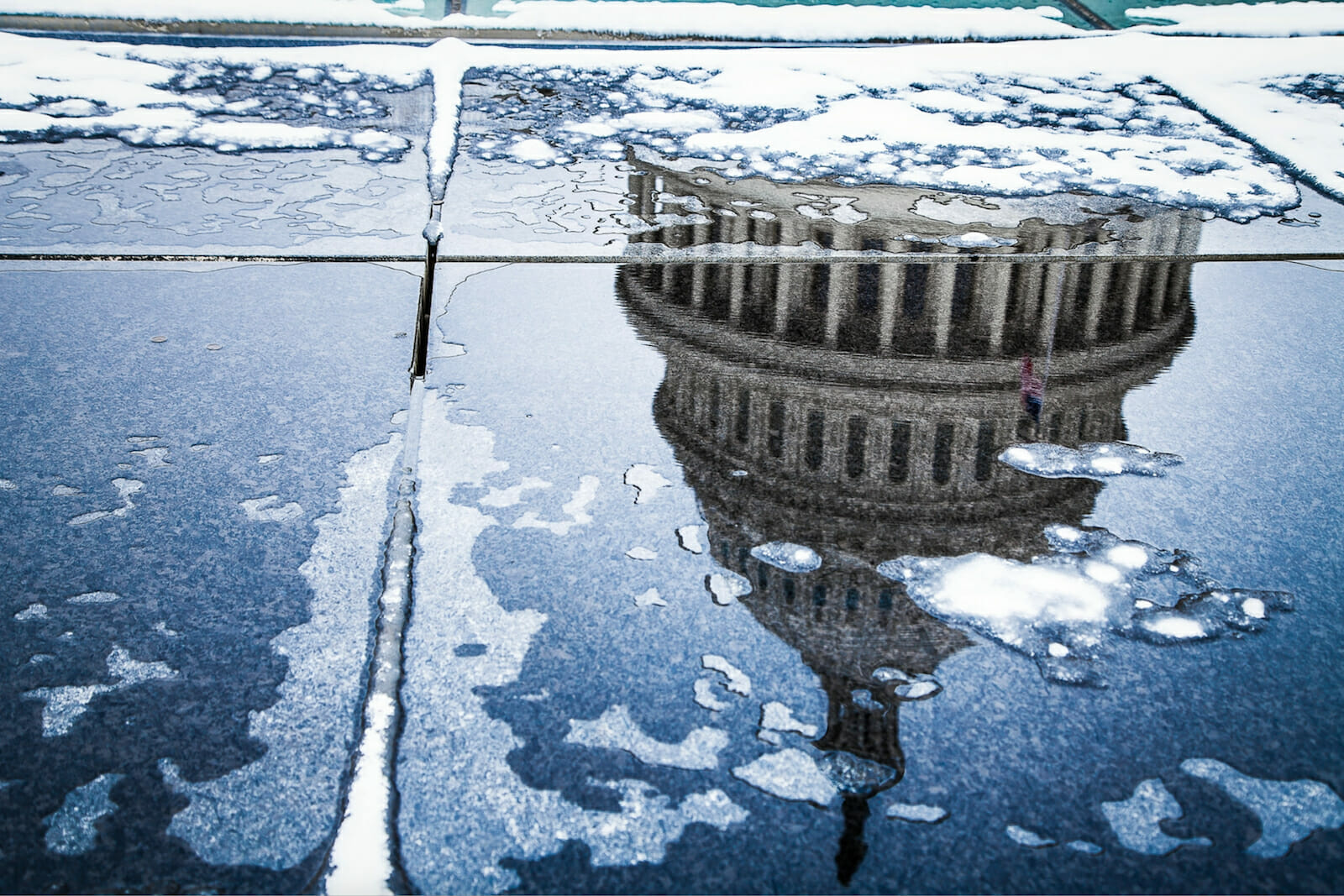
Tech
The U.S. Government is not ready for the 2020s. But it Could Be.
The 1990s felt like simpler times. With a booming economy, singular superpower status—even a budgetary surplus!—the U.S. had the wind at its back. The “end of history” seemingly approached. The country was largely confident that its government was equipped to handle the challenges of the time.
Times have changed. Facing the new decade, we are now confronted by a world with assertive global powers, deep economic and social disruption, environmental decay, terrorism, information warfare, and persistent economic espionage. Our government just is not well-prepared for this fast-moving future. And how could it be? The average federal department is over 100 years old, and the size of the federal workforce is virtually unchanged from 40 years ago.
While our institutions have sometimes demonstrated an ability for reform, these instances have generally been reactive to scandal or tragedy (think the 9/11 Commission or military reform spurred by the Iran hostage crisis). Today, with D.C. mired in gridlock, the American government’s ability to respond to new challenges is slower than ever, just as the rate of change and complexity continues to accelerate.
Fresh thinking in government—new capabilities, teams, and structural reform—is needed to address these challenges. Below, I have articulated three key areas that merit the government’s urgent attention and why new capabilities should be activated.
Offering expert technology perspectives where they are most needed
Technology touches on every facet of our economy, society, and environment, a trend that will only grow more pronounced. The full range of technology policy questions we face today—from artificial intelligence and cybersecurity to privacy and digital currencies—are too complex to be comprehensively understood by any one technologist, let alone individual legislators and their staff on Capitol Hill.
Unfortunately, just as the number, complexity, and impact of these topics has increased, the size of Congressional staff has actually decreased since the 1980s, according to a report by the American Political Science Association. “On issue after issue,” the study states, “Congress’s available in-house expertise is inadequate to support fully-informed independent judgment of executive or lobbyist proposals, and certainly inadequate to lead in policy innovation.”
This void has been filled, predictably, by a dramatic growth in lobbying, providing information and guidance to staff and legislators who, stretched across myriad topics and demands, lack the experience and knowledge to lead. Suboptimal outcomes to the national interest should be expected when the only perspective available to policymakers is potentially partial and incomplete.
A nonpartisan, unbiased team of technology experts is needed to advise members and staff by providing objective and expert analysis, supplementing the limited work done today by the Congressional Research Service (CRS) and Government Accountability Office (GAO). Just such an office, the Office of Technology Assessment (OTA), was established in 1972 but was dismantled in 1995 by the new Congressional leadership. This office must be reconstituted to perform its essential mission. Periodic efforts have been made in the past to reassemble the office, including companion bills that were introduced earlier this fall during the current Congressional session. While comprehensive efforts to modernize Congress should be an urgent priority, the need for a robust, latter-day OTA is self-evident, as demand for legislation across numerous domains areas continues to grow.
Getting ahead of the next (Operation) Infektion
Over the past years, we have all seen firsthand the impact that misinformation and disinformation campaigns can have on a society. Whether to swing votes, sow division, or simply motivate ad clicks, these methods have proven devastating. Many citizens have “tuned out” from civic discourse completely or adopted extreme, truth-challenged views. Unfortunately, the difficulty of discerning fact from fiction will only become worse as algorithmically-devised, machine-generated text becomes weaponized and deployed at scale.
Embodying a top-down approach to this challenge, social media companies are being brought to task to better police malicious or questionable content posted on their platforms, whether by labeling it, demoting it, or blocking it entirely. Though crucial, this approach neglects the other half of the equation: a citizenry more able to assess the trustworthiness and relevance of news it consumes.
Some countries, such as Estonia and Finland, have been able to sustain a culture of media literacy and fact-based discussion. These successes are attributed to high-quality education, a free press, and tailored media literacy training. While the U.S. education system generates dramatically unequal results, and the free press remains resilient, this third element is entirely absent from federal policymaking today.
An Agency for Media Literacy tasked with research, grants, and training related to smart news and information consumption is needed today more than ever. While thorny practical questions will need to be examined—should programs be led at a state or federal level? How to handle concerns of political bias?—the current course is unsustainable and policymakers must begin to devise more holistic solutions.
Jump-starting tomorrow’s Silicon Valleys
The U.S. technology industry’s origin story would be incomplete without a chapter on the role of government. Federal investment plateaued in the 1960s during the space race, when R&D constituted nearly 12% of the total federal budget, according to data from the American Association for the Advancement of Science. Looking back, we see that the innovation spurred by this period provided the basis for decades of economic activity that we continue to enjoy, as well as the foundation of the U.S.’s national security edge.
While the U.S. wrote this playbook, we see its lessons being implemented today most vigorously by China. As part of an overarching national investment strategy, the country is investing billions of yuan in key technology domains ranging from semiconductors to solar; today, the country is already a world leader in 5G telecommunications and several applications of artificial intelligence.
By contrast, U.S. government R&D has steadily declined, representing less than 3% of the total budget in 2018. Today, the vast majority of R&D is driven by industry, not the public sector; as described by Kai-Fu Lee in AI Superpowers, “U.S. federal funding for math and computer science research amounts to less than half of Google’s own R&D budget.” While robust private sector R&D is essential, there is a vital role to be played by government to fill the void in high-risk areas where the prospects for commercialization are long-term, uncertain, or both. Indeed, it is just these types of thorny, difficult domains where far-reaching opportunity may rest. Absent new direction, the U.S. faces a potential near-future where its outmatched in key technology areas, relies on a foreign industrial base and no longer leads in standard setting.
Fortunately, the gears of D.C. policymaking have begun to turn, with consensus emerging on the need to rise to the challenge. A recent study from the National Security Commission on Artificial Intelligence, chaired by former Google head Eric Schmidt, contends that government “retains a core responsibility to steer advancements in ways that protect the American people and ensure a robust basic research environment.” Senate Minority Leader Chuck Schumer seems to agree, articulating a vision to invest $100 billion on key ‘moonshot’ projects over the next several years.
While the policies to achieve this aim will vary—increased direct investment, incentives to industry to prioritize long-term R&D, STEM-friendly education and immigration initiatives, among others—the goal of ensuring the U.S. remains the global champion in key emerging technologies is clear. Federal investment is inextricably linked to the country’s ability to not only unlock new engines of economic activity but also retain a dominant edge in national security. A whole-of-government approach will be required to ensure this vision, necessitating that leaders charged with advancing this policy have the ear of current and future Presidents, potentially as part of a Council on National Innovation Strategy.
Looking to the future
These are three examples of the type of responsiveness and inventiveness the government needs to be ready for the future—but much more will need to be done. Let us hope that policymakers are able to overcome the present paralysis to address so many diverse challenges coming our way in the years to come.

